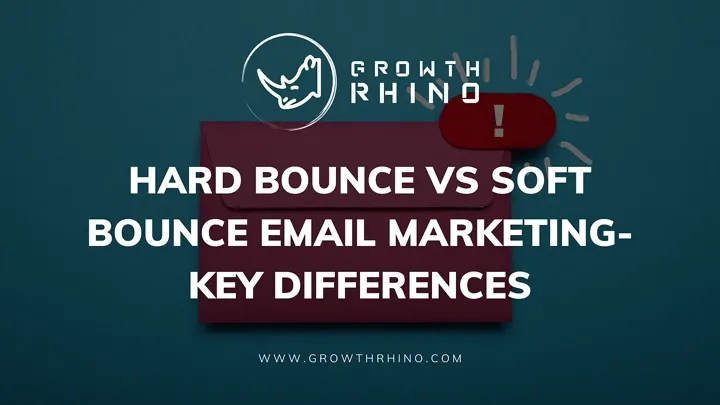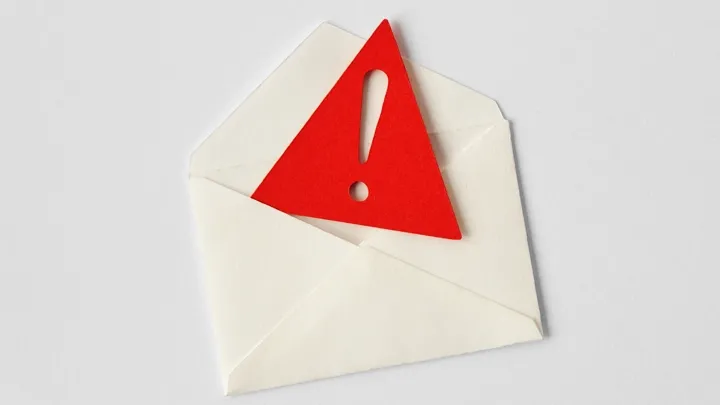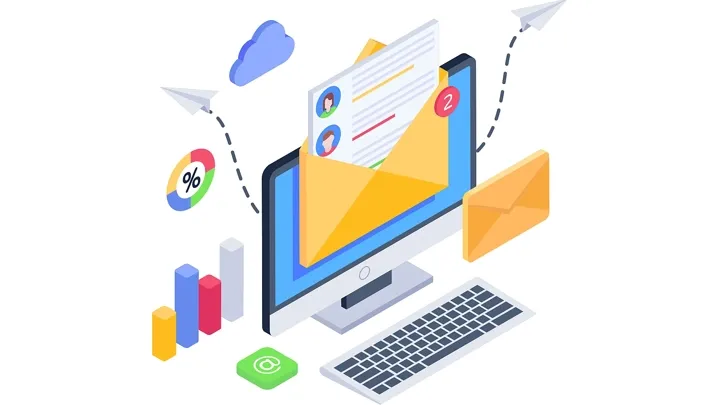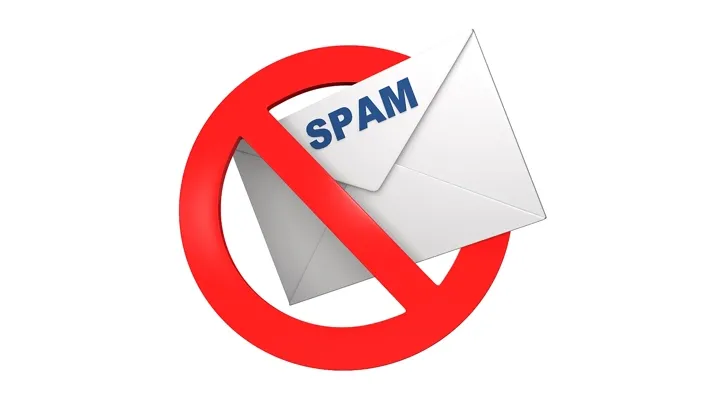
Have you ever wondered what the difference is between a hard bounce and a soft bounce email marketing?
Email marketing is an art, and it can be difficult to maintain a high-quality list for generating leads. Hard bounce vs soft bounce email marketing is often discussed in the industry, but what does that really mean?
In this article, we will discuss what each type of email bounce means and how they differ from one another. We will also cover why it matters for marketers who are trying to reach their audience through email marketing campaigns.
What is Email Bounce?
Email bounce is the term used to describe an email message that is returned as undeliverable by a mail server. When an email bounces, it has failed to reach its intended destination for some reason.

Why do bounced emails happen?
Email bounces can be caused by different issues, such as:
- full mailbox
- incorrect/invalid email address
- server outages
- spam filters
- poor sender reputation caused by spam complaints
- flagged content in the message body
- restricted DMARC record for your sending domain (The Domain-based Message Authentication, Reporting, and Conformance, or DMARC, is a technical solution that protects email senders and receivers from spam, spoofing, and phishing by verifying the domain of incoming emails.)

Email Bounce Back in 2 Types of Emails - How They Differ?
1) Marketing Emails:
Marketing emails are the types of emails that are sent to a large group of people. They may include newsletters, offers, or other content that is meant for general distribution. Marketing email experience hard email bounces at a much higher rate than other types of emails.

If a hard bounce occurs, then the email address is not valid and it should be removed from the sender's list. In this case, you do not receive any notification about failed deliveries as well none of your emails would be resent to that recipient.
2) One-to-one Emails:
One-to-one emails are the opposite of marketing emails. They are messages that are sent to only one person and typically contain information about a specific product or service. One-to-one emails typically fall into one of two categories: transactional or relationship.
Transactional emails are messages that are sent in response to an action taken by the recipient, such as a purchase confirmation email or a receipt for online order.
Relationship emails are messages that are sent proactively to maintain a relationship with the customer such as joining the company's mailing list, etc.
If a one-on-one email is sent to a recipient whose email address is no longer valid, the message will bounce back to the sender and you'll receive a bounceback email notification indicating that the email could not be delivered.
Types of Email Bounces:
There are several types of email bounces: Hard Bounce and Soft Bounce and Pending bounce. Let's discuss each type in detail below.
1) Hard Bounce:
A Hard Bounce is an email that cannot be delivered to the recipient for some specific reason.
Reasons could be:
- that the email address does not exist, has been misspelled, or has been abandoned and closed (i.e @gmial.com instead of @gmail.com or when someone leaves a company or abandons a free email account)
- the mailbox is full
- the server rejects the email because of invalid syntax.
Hard bounces are permanent failures and these emails will never reach the intended recipient.
2) Soft Bounce:
A soft bounce or a temporary bounce in email marketing is an email that fails to reach the recipient, but it is not a permanent failure. If your previous message was unsuccessful, you may be able to send another email to that address at a later date.
The email may not reach the recipient because:
- The mailbox is full and thus has no space for another email message.
- Email file size may be too large.
- The server may be down.
- You've been added to a blacklist.
- The email account is inactive.
- Email message blocked due to content.
- The recipient server's DMARC criteria for authentication are not met by the email message.
Temporary bounces are generally self-resolving and don't require immediate attention, but they should still be closely tracked.
It's possible that an email that softly bounced will be delivered at a later date. If it still fails, then it's counted as a hard bounce.
The number of soft and hard bounces you receive is a measure of how effectively your emails are delivered. Therefore, both types of bounces should be addressed right away.
3) Pending Bounce:
When there is a problem with the sender's or recipient's email server, and their emails are not delivered, this is known as a pending bounce. The email service provider, on the other hand, continues to try to deliver the messages for a period of 2-3 days. This condition is referred to as pending bounce.
If the email fails to go through even after this period, it's considered a soft bounced email.
Hard bounce vs Soft bounce Email Marketing:
Here is a summary of hard bounce vs soft bounce email marketing- key differences
Hard Bounce:
- When there is no chance of delivering the email to the recipient's email server ever, it's called Hard bounce.
- The email server recognizes the address as invalid and will not try to deliver it again.
- It will get returned immediately without any notifications.
- Hard bounces are more dangerous than soft bounces because they can seriously damage your sender's reputation and deliverability score in the long term. So, it's important to keep an eye on your hard bounce rate and take corrective actions immediately.
- Hard bounces might be a sign that you need to fix something on your end - like an incorrect or unsubscribed email address
- Hard bounces are an indicator that you might want to remove those emails from your database and try sending the campaign again at a later time if possible, while soft bounces should not be removed as they indicate something is wrong with either the receiving server or user's address (it could even mean both).
Soft Bounce:
- When there is a chance that the email might get delivered, it's called a soft bounce.
- Soft bounces, on the other hand, are usually caused by factors beyond your control - like a full mailbox or an email server that's down.
- It will get returned with a temporary failure notification.
- You can't do anything about soft bounces, but you can keep track of them and see if they increase over time. That might be a sign that you need to upgrade your email list infrastructure.
What is a Bounce Rate?
The bounce rate is simply determined by dividing the total number of bounced emails by the overall quantity of emails sent. To get your percentage, multiply it by 100.

Bounce Rate = Bounce emails/ Total Emails Sent x 100
The bounce rate for an email campaign should be less than 2%.
Anything above a 2% bounce rate for your email campaign is worth paying attention to. If you are seeing bounce rates over 5%, or 10% or even higher, this suggests a problem with your email campaign that you will want to fix.
How to Improve Bounce Rate?
There are some simple things you can do to improve your bounce rate and ensure that more of your emails reach their intended recipients.
1) Clean up your email list:
This means removing invalid or old addresses, as well as subscribers who have unsubscribed from your list.
2) Check the sender reputation:
ISPs use the Sender Reputation score to assess the trustworthiness of a company that sends emails. The higher your score, the more likely your emails will make it into your subscribers' inboxes.

Make sure also your IP address is not blacklisted, and that your domain name is not associated with spam.
3) Keep your audience engaged:
You can also improve your bounce rate by taking steps to ensure that your email content is of high quality and relevant to your subscribers.
4) Use an email marketing service:
There are many email marketing services that can help you to improve your deliverability rates and keep your bounce rate low.
5) Make sure your emails aren't spammy:
When it comes to designing and developing your messages, be sure to avoid spam triggers, as these may easily result in soft bounces.

Spam filters are intended to safeguard inboxes from harmful or unsolicited emails. It is critical that your emails pass the spam filters in order for them to be successfully delivered.
6) Use double opt-in:
Send a confirmation email to new subscribers asking them to confirm their desire to be on your email list. This ensures that the email address you're sending to is valid.
This also helps you ensure that your list of recipients will engage with your emails.
7) Avoid using free sender domains:
Avoid using free services like Gmail or yahoo if you're sending promotional, content, or sales emails to an email list. Because Gmail.com or Yahoo.com cannot be verified or authenticated.
Conclusion:
We hope that the information has helped you better understand what a hard bounce is, how soft bounces work, and why they matter to your email marketing strategy.
If you want help implementing these strategies or need more information about our SaaS-based email marketing strategy for your business, please contact us anytime!
Our team of experts is ready and waiting to partner with you on an amazing solution that will increase conversions while making sure your deliverability rates stay high.
Which types of bounces do most affect your business? Please share below
